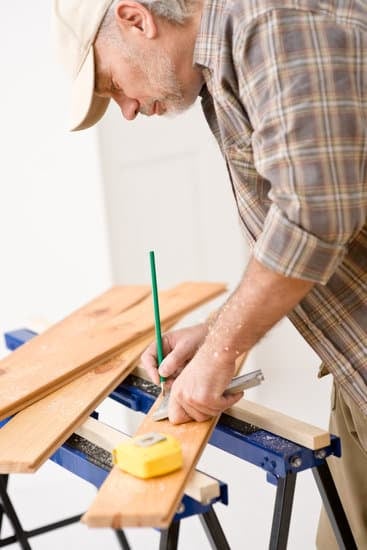When embarking on home improvement projects, many homeowners are eager to know whether the money spent on these improvements can be tax deductible. This article aims to provide a comprehensive understanding of the tax deductibility of home improvement expenses. By exploring the rules, regulations, and exceptions surrounding this topic, homeowners will be equipped with the knowledge they need to make informed decisions regarding their renovations.
Before diving into the specifics, it is important to clarify what qualifies as a home improvement expense. From major renovations to smaller upgrades, any expense that enhances the value or functionality of a home can potentially be considered a home improvement expense. Understanding this definition is crucial in determining which expenses are eligible for tax deductions.
So why should homeowners bother with understanding the tax deductibility of their home improvement expenses? The answer lies in potential financial benefits. By knowing which expenses can be deducted from their taxes, homeowners can save money in the long run and offset some of the costs associated with their renovations. Therefore, taking the time to familiarize oneself with these regulations is a smart move for anyone considering making improvements to their property.
In this article, we will delve into various aspects related to home improvement tax deductibility. We will explore eligible expenses and identify which types of renovations can potentially provide tax benefits. Additionally, we will emphasize the importance of documentation and proof when claiming deductions for these expenses. Furthermore, we will discuss any exceptions or limitations that may apply when it comes to the deductibility of home improvement costs.
For those seeking professional guidance regarding taxes and deductions, we will highlight the benefits of seeking advice from tax experts or accountants who specialize in this area. Additionally, real-life case studies will showcase successful examples of homeowners who have claimed tax deductions for their home improvement expenditures.
By providing comprehensive information on this topic, this article aims to equip homeowners with valuable knowledge that can help them navigate through the complexities of taxes and ultimately make informed decisions about their home improvement projects.
Defining Home Improvement Expenses
When it comes to determining whether a home improvement expense is tax deductible, it is crucial to have a clear understanding of what exactly qualifies as a home improvement expense. This section will delve into the specifics of defining home improvement expenses and provide examples of qualifying expenses.
Types of Qualifying Home Improvement Expenses
There are several types of expenses that can be considered as home improvements and potentially eligible for tax deductions. These include:
- Repairs and maintenance: Expenses incurred to fix or maintain a property may qualify if they improve the overall condition or functionality of the home. Examples include fixing plumbing issues, repairing roofs, or repainting walls.
- Energy efficiency upgrades: Home improvements that aim to increase energy efficiency are often eligible for tax deductions. These can range from installing solar panels or geothermal heating systems to upgrading insulation or windows.
- Accessibility modifications: Expenses related to making a home more accessible for individuals with disabilities may also qualify for tax deductions. This can include adding ramps, widening doorways, or installing grab bars in bathrooms.
- Renovations and additions: When it comes to renovations or additions that expand the living space, some costs may be tax deductible. For instance, adding an extra room, finishing an attic or basement space, or constructing a new bathroom are likely to qualify.
It is important to note that only expenses directly related to improving your primary residence are generally eligible for tax deductions. Expenses related to second homes or rental properties may have different rules and regulations governing their deductibility.
Non-Qualifying Home Improvement Expenses
While many home improvement expenses may be eligible for tax deductions, there are certain costs that typically do not qualify. These include routine repairs and maintenance that do not enhance the value or extend the life of your property, such as regular lawn care services or replacing light bulbs. Additionally, expenses for aesthetic improvements that do not increase the value of your home, such as interior decorating or purchasing furniture, are generally not tax deductible.
By understanding what qualifies as a home improvement expense, homeowners can better navigate the complexities of tax deductions and ensure they are accurately and effectively claiming any eligible expenses.
Importance of Understanding Tax Deductibility
One of the key aspects that homeowners need to understand when it comes to home improvement expenses is the tax deductibility of these expenses. This knowledge is crucial because it can potentially save homeowners a significant amount of money in taxes. By knowing which expenses qualify for tax deductions, homeowners can make more informed decisions about their home improvements and maximize their potential tax savings.
Understanding the tax deductibility of home improvement expenses allows homeowners to take advantage of various tax benefits and incentives provided by the government. In many cases, certain home improvement expenses can be deducted from your total taxable income, ultimately reducing your overall tax liability. This means that you may be able to lower the amount of income subject to taxation by claiming deductions on eligible renovation costs.
To determine whether a particular expense is tax deductible, it is important to refer to the rules and regulations set by the IRS or consult with a tax professional. Generally, home improvements that add value to your property or are considered energy-efficient upgrades may be eligible for tax deductions. Examples of eligible expenses include adding insulation, installing solar panels, upgrading HVAC systems, or remodeling a bathroom or kitchen.
In order to claim tax deductions for home improvement expenses, proper documentation and proof are essential. Homeowners should keep all receipts, invoices, contracts, and any other relevant documents related to their improvement projects. This documentation serves as evidence that the expenses were indeed incurred for qualified home improvements. Additionally, homeowners should retain accurate records of any energy efficiency certifications or other required documentation when claiming deductions for energy-efficient upgrades.
By understanding the intricacies of tax deductibility for home improvement expenses, homeowners can strategically plan their projects and potentially save thousands of dollars in taxes. It is always advisable to seek professional advice from a certified accountant or tax expert who can guide homeowners through the complex world of tax laws and regulations. Taking proactive steps to educate oneself about these deductions can provide financial benefits and peace of mind for homeowners undertaking home improvement projects.
Home Improvement Tax Deductibility
When it comes to home improvement expenses, it is important for homeowners to understand the rules and regulations surrounding their tax deductibility. The ability to claim tax deductions for these expenses can have a significant impact on a homeowner’s finances, so having a good understanding of the rules is crucial.
One of the key factors in determining whether a home improvement expense is tax deductible is whether it qualifies as an eligible expense. Eligible expenses typically include those that improve the value or quality of the property, such as adding a new roof, upgrading heating and cooling systems, or remodeling a bathroom or kitchen. However, it is important to note that not all home improvement expenses are considered eligible for tax deductions.
To claim tax deductions for home improvement expenses, homeowners must keep proper documentation and proof. This includes invoices, receipts, contracts, and any other relevant paperwork that shows the details of the expense incurred. It is essential to maintain thorough records of these expenses in case they are needed for verification purposes during an audit by the Internal Revenue Service (IRS).
While there are general rules and guidelines surrounding the tax deductibility of home improvement expenses, it is important to be aware that exceptions and limitations may apply. Certain limitations may exist based on factors such as the type of property being improved (primary residence versus rental property) or the purpose of the improvement (repair versus renovation). It is important for homeowners to familiarize themselves with these exceptions and limitations to ensure they accurately claim any potential tax deductions.
Eligible Expenses
One of the key factors in determining whether your home improvement expenses are tax deductible is understanding which types of expenses qualify. Not all home improvement projects will be eligible for a tax deduction, so it is important to have clarity on what expenses can be claimed.
Some common examples of eligible home improvement expenses include renovations, additions, and installations that enhance the value or functionality of your home. This can include projects such as adding a new room, upgrading the kitchen or bathroom, installing energy-efficient appliances or solar panels, or even landscaping improvements.
It’s important to note that repairs and maintenance costs typically do not qualify for a tax deduction. These expenses are considered part of the regular upkeep of a property and are not considered capital improvements. However, if a repair is made as part of a larger home improvement project that does qualify as a deductible expense, then it may be possible to claim it as well.
Additionally, it’s worth mentioning that any personal expenses incurred during a home improvement project cannot be claimed as deductions. For example, if you convert one of your rooms into a home office but also use it for personal purposes, you can only deduct the portion related to the business use from your taxes.
Overall, being aware of which types of home improvement expenses are tax deductible can help homeowners make more informed decisions about their renovation projects. By focusing on eligible expenses and keeping proper documentation and proof, individuals can maximize their potential tax deductions while ensuring compliance with regulations.
Documentation and Proof
Importance of proper documentation
When it comes to claiming tax deductions for home improvement expenses, keeping proper documentation and proof is vital. Without the necessary evidence, homeowners may face a considerable challenge in substantiating their claims, potentially leading to audits and penalties. Therefore, it is essential for homeowners to diligently maintain accurate records throughout the entire home improvement process.
Types of documentation needed
To claim tax deductions for home improvement expenses, homeowners should keep a variety of documents and receipts. This includes invoices or receipts for materials purchased, contractor agreements or contracts, permits obtained from local authorities, and any architectural plans or blueprints. Additionally, bank statements or cancelled checks can serve as proof of payment made towards the home improvement project.
Photographic evidence can also play a significant role in providing visual documentation of the improvements made. Before-and-after pictures can clearly demonstrate the enhancements made to the property and further support the homeowner’s claim for tax deductions.
Organizing and storing documents
Proper organization and storage of these documents are crucial. Homeowners should establish a system that allows them to easily access all relevant paperwork when needed. This may include creating physical folders or binders specifically designated for home improvement expenses. Furthermore, it is advisable to make digital copies or scans of all important documents as an additional precaution against loss or damage.
It is important to note that retaining these records should extend beyond just the year in which the improvements were made. The Internal Revenue Service (IRS) generally requires taxpayers to retain supporting documentation for at least three years after filing their tax return claiming a deduction based on the expenses. However, it is recommended to keep these records for longer periods as circumstances may arise where they are requested later.
By maintaining proper documentation and proof of home improvement expenses, homeowners can ensure they have sufficient evidence to support their claims for tax deductions. This practice not only minimizes the risk of audits and penalties but also provides peace of mind and contributes to a smooth tax filing process.
Exceptions and Limitations
When it comes to the tax deductibility of home improvement expenses, it’s important for homeowners to be aware of any exceptions or limitations that may apply. While many home improvement expenses can be eligible for tax deductions, there are certain circumstances where deductions may not be allowed or only partial deductions may be permitted.
One common exception is when the home improvement is considered a personal expense rather than a necessary repair or improvement. For example, if a homeowner decides to renovate their kitchen purely for aesthetic reasons, without any functional or structural issues that need to be addressed, the expense may not qualify for a tax deduction. The IRS generally requires that the improvements made on the home must directly relate to maintaining or improving its value, adaptability, or energy efficiency.
Additionally, there are certain limitations imposed on tax deductions for home improvement expenses. One limitation is the requirement that the total amount of deductions claimed cannot exceed the increase in property value resulting from the improvements made. In other words, if a homeowner spends $30,000 on renovations but the value of their property only increases by $20,000 as a result, they can only claim up to $20,000 as a deduction.
It’s crucial for homeowners to understand these exceptions and limitations in order to accurately determine their eligibility for tax deductions and avoid potential problems with the IRS. Consulting with a professional tax advisor or accountant can provide valuable guidance in navigating these rules and ensuring compliance with tax regulations. By understanding any exceptions or limitations upfront, homeowners can make informed decisions regarding their home improvement projects and maximize their potential tax benefits.
Professional Advice
Professional advice can be invaluable when it comes to understanding and navigating the complexities of tax deductions for home improvement expenses. Hiring a tax expert or accountant who specializes in this area can provide homeowners with numerous benefits and ensure that they maximize their eligible deductions.
One of the main advantages of seeking professional advice is the expertise and knowledge that these individuals possess. Tax laws and regulations are constantly changing, and it can be challenging for homeowners to stay updated on all the necessary information. By consulting with a tax expert or accountant, homeowners can tap into their specialized knowledge and ensure that they are aware of any changes or updates that may affect their eligibility for deductions.
In addition, professionals in this field have experience in identifying eligible expenses and understanding how they can be properly documented. They can guide homeowners through the process of determining which types of home improvement expenses qualify for tax deductions and help them compile the necessary documentation to support these deductions. This includes ensuring that receipts, invoices, contracts, and other relevant paperwork are organized and complete.
Furthermore, seeking professional advice can also bring peace of mind to homeowners as they navigate the potentially complex world of tax deductions. With a thorough review by an expert or accountant, homeowners gain assurance that they are following all regulations correctly and taking advantage of all possible deductions available to them. This can help them save money while avoiding potential penalties or audits from improper claims.
By consulting with professionals in this field, homeowners can benefit from their expertise, knowledge of eligibility criteria, guidance on documentation requirements, and overall peace of mind as they navigate the intricacies of home improvement tax deductibility. It is important for homeowners to recognize the value that professional advice brings in maximizing their eligible deductions and ensuring compliance with applicable regulations.
| Benefits | of Seeking Professional Advice |
|---|---|
| Expertise | Professionals have in-depth knowledge and expertise in tax laws and regulations. |
| Identifying Eligible Expenses | Professionals can assist homeowners in determining which home improvement expenses qualify for tax deductions. |
| Documentation Guidance | Tax experts or accountants can provide guidance on collecting and organizing the necessary documents to support deductions. |
| Peace of Mind | Consulting with professionals brings assurance that homeowners are following regulations correctly and maximizing their eligible deductions. |
Case Studies
One example of a homeowner who successfully claimed tax deductions for their home improvement expenses is Jane Smith. Jane had recently purchased a fixer-upper property that required major renovations. She hired contractors to update the plumbing, electrical wiring, and install new windows throughout the house. These improvements not only increased the value of her property but also made it more energy-efficient.
Jane was able to deduct a portion of her home improvement expenses on her tax return by claiming them as a medical expense. Her doctor had recommended specific modifications to accommodate her mobility issues, such as making doorways wider and installing ramps for wheelchair access. By providing proper documentation from her doctor and contractor, Jane was able to support her claim for these medical-related home improvement expenses.
Another case study is John Davis, who runs his own business from his home office. He decided to convert his basement into a dedicated workspace and invested in remodeling to create a professional environment conducive to productivity. He added insulation, upgraded lighting fixtures, and installed custom-built cabinets for storage.
Since this renovation directly related to John’s business operations, he was eligible to claim deductions for these home improvement expenses under the category of “home office deduction.” By consulting with an accountant familiar with small business tax rules, John was able to accurately calculate the percentage of his home used exclusively for business purposes and claim the corresponding portion of his renovation costs as a tax deduction.
| Homeowner Name | Type of Improvement | Tax Deduction Category |
|---|---|---|
| Jane Smith | Medical accommodations | Medical expense deduction |
| John Davis | Home office renovation | Home office deduction |
These case studies demonstrate that homeowners can successfully claim tax deductions for their home improvement expenses by meeting specific requirements and providing proper documentation. It is crucial for individuals to understand the different tax categories under which deductions may be claimed, such as medical expenses or home office usage, to ensure they are eligible for these deductions.
Seeking professional advice from tax experts or accountants can also help homeowners navigate the complex rules and maximize their tax savings when it comes to home improvement expenses.
Conclusion
In conclusion, understanding the tax deductibility of home improvement expenses is crucial for homeowners. This article has provided a comprehensive overview of the topic, covering everything from defining home improvement expenses to exploring rules and regulations surrounding their tax deductibility.
One of the key takeaways from this article is the importance of keeping proper documentation and proof to claim tax deductions for home improvement expenses. The IRS requires detailed records in order to substantiate these deductions, so it is crucial for homeowners to organize and save receipts, invoices, and any other relevant documents.
Additionally, seeking professional advice and consultation from tax experts or accountants can be extremely beneficial. They have the knowledge and expertise to guide homeowners through the complexities of tax laws and help them maximize their deductions.
Ultimately, understanding whether money spent on home improvement is tax deductible can have significant financial implications for homeowners. By being aware of eligible expenses and any exceptions or limitations that may apply, homeowners can make informed decisions about their investments in their homes. So, it is imperative for all homeowners to educate themselves on these matters in order to minimize their tax liability and make the most out of their home improvement efforts.
Frequently Asked Questions
Can you write off home improvement purchases?
Home improvement purchases can sometimes be written off, but it depends on the specific circumstances. Generally, for a purchase to be eligible for a tax deduction, it must meet certain criteria set by the IRS. One common example is if the home improvements are made for medical purposes and are considered necessary for health reasons.
In this case, if you have a doctor’s recommendation specifying the need for certain improvements, you may be able to claim them as medical expenses on your taxes. It’s important to consult with a tax professional or refer to IRS guidelines to determine if your specific home improvement purchases qualify for write-offs.
What happens if you don t have receipts for home improvements?
If you don’t have receipts for home improvements, it can create challenges when it comes to proving the expenses to the IRS. Receipts serve as documentation and evidence of the money spent on improving your home. Without receipts, it becomes harder to substantiate your claims and provide proof of the legitimate expenses incurred during home improvement projects.
However, there are alternative ways to prove these costs even without receipts. For example, cancelled checks, bank statements showing payments made directly to contractors or suppliers, credit card statements indicating charges related to home improvements can all be used as supporting evidence in case of an audit or inquiry.
How do I prove home improvement to the IRS?
To prove home improvements to the IRS, you need proper documentation and records that demonstrate both the nature of the work done and its associated costs. This typically includes gathering all relevant paperwork such as contracts with contractors or service providers involved in the project, detailed invoices or receipts showing amounts paid and itemized breakdowns of expenses incurred (labor costs, materials purchased). Additionally, any architectural plans or drawings showcasing changes made could help support your case further.
Maintaining a comprehensive paper trail and organizing all relevant documents is crucial in proving home improvements to the IRS should they request proof during an audit or review of your tax return. Consequently, keeping accurate records from start to finish is advisable whenever undertaking home improvement projects.

I’m thrilled to have you here as a part of the Remodeling Top community. This is where my journey as an architect and remodeling enthusiast intersects with your passion for transforming houses into dream homes.





